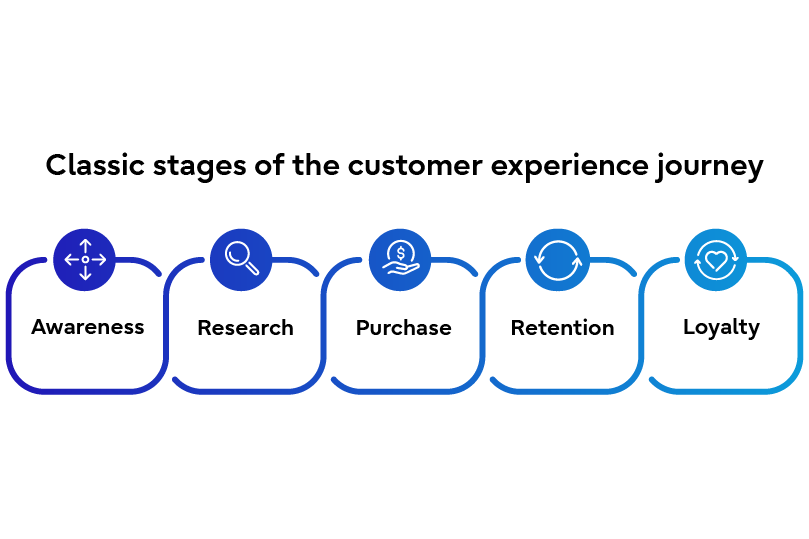How AI creates more sustainable customer journeys

Article|2024-02-13
6 minute read
Not only can AI help companies make their customer interactions smoother and more personalized, it can also open up opportunities for stakeholders to make more sustainable decisions says Durga Kota, Chief Technology Officer for Fujitsu in the Americas.
Consumers’ demands for sustainable products might be getting louder, but many aren’t backing up their intentions with action. A 2023 BCG study(*1) found that although 69% of its respondents were concerned about sustainability when it came to buying groceries, only 7% were actually buying sustainable products.
What’s stopping them? BCG found that the barriers included lack of awareness, convenience, trust and price. There’s a message here for businesses: make it easier for customers to make sustainable choices. And one way to do that is to examine the various stages of the customer experience to identify areas where process inefficiencies can be replaced with more sustainable practices. These upgrades can equip companies to reduce waste in their processes and, in turn, provide customers with fresh opportunities to make more environmentally and socially responsible decisions.
This is where AI comes in. Businesses need to exercise caution around GenAI, but when used wisely AI-powered technologies (both traditional and generative) can provide significant upgrades to customer journeys. From the initial stages of research and awareness through to point of purchase and advocacy, the customer journey’s stages of interaction between business and consumer are a rich environment for implementing AI to enhance sustainability levels.

-
(*1)https://www.bcg.com/publications/2023/nudging-customer-behavior-toward-sustainable-choices
Léa Turquier, Kanika Sanghi, Sarah Lichtblau, Julia Dhar, Fadi Makki, Lauren Taylor ”Overcoming the Eight Barriers to Making Green Mainstream” Boston Consulting Group, June 09, 2023 - Find out more about Gen AI trust issues
1. Increase product traceability and trust at the point of purchase
“Customers are looking for a new level of transparency in their product choices. And there is a new generation of buyers who want to know that the products they consume have been sourced and manufactured responsibly.”
As concerns about greenwashing and ethics-washing grow, customers are demanding more transparency from companies. At the point of purchase, they’re asking, “Just how sustainable are the products in my shopping cart?”
AI and blockchain can help here. By using blockchain to provide a secure shared ledger which can ensure data authenticity and using AI to track and predict patterns in supply chain data, companies can spot areas of waste and address inefficiencies that can, for instance, lower energy consumption and emission levels. They can also use these technologies to create circular economies. Automotive companies, for example, can recover parts from a vehicle and reuse them, which not only reduces wasted materials but also helps them create new products more cost-effectively.
Another benefit of these technologies is that businesses can use them to give consumers visibility about where, when and how each product is manufactured. This kind of transparency builds customer trust and even brand advocacy, so it will provide tangible benefits to businesses.
A good example of this is Fujitsu’s work with AB InBev, one of the biggest brewers in the world. Fujitsu used AI and blockchain to provide a full view of the supply chain, then incorporated a QR code into the packaging that tells the drinker where the barley in their beer was grown, reaped and then malted, giving customers greater confidence in the sustainability of the product.
2. Frontload conversational AI into customer journeys to encourage sustainable buying behaviors
“Conversational AI is still a largely untapped opportunity. Increasingly, customers won’t just be searching for products – they’ll be having a conversation with the company, and getting what they need out of that conversation.”
AI can be infused into the earlier customer journey stages of awareness and research to empower consumers to streamline their searches. Also, from an organizational perspective proactively embedding AI into customer acquisition and retention strategies can prevent companies from wasting resources on poorly targeted tactics. Businesses can use AI client outreach applications and conversational AI chatbots to give customers more personalized recommendations in a more intuitive format. These measures allow companies to precisely target their customers, refine their products, and predict demand, which can avoid over-stocking inventory or wasting resources on poorly targeted customer outreach. AI can save consumers time too – virtual fitting room try-ons avoid wasted emissions from returned deliveries. Increasingly AI will become the 'shop window' for organizations’ digital channels.
But conversational AI isn’t only useful in e-commerce – it can also have an important impact in the public sphere. It allows citizens to ask freeform questions to navigate more instinctively through processes such as requesting a birth certificate or seeking guidance on maternity benefits. This simplifies the process of citizens accessing the information and support they need about their civil rights. By resolving the requests digitally it also reduces the need for citizens to travel into offices to get the answers they need, which has a knock-on effect on transport emissions.
Using AI early on in user journeys can also bring important benefits to healthcare environments. To enhance telehealth platforms, AI avatar health workers can engage with patients who are unable to visit clinics in person, and reduce the pressure on healthcare workers by providing recommendations around preventative care and helping with triage and admin. The WHO, working with AI avatar provider Soulmachines, has trialed implementing an AI digital health worker who can share advice on mental health, quitting smoking, or Covid-19.
3. Use the retention stages to help consumers build greener habits
We can also go a step further by using AI to collaborate with customers as they engage with your products and services and help them refine their own consumption habits.
A great example of this is in energy and utilities, where providers are using AI to gain customer insight. Through these “behind the meter” services, providers can analyze each customer’s energy consumption and feed that analysis back to the consumer – for example by showing them when they use the most electricity. This insight gives the consumer more control over the way they consume energy moving forward, for example by changing how they set their thermostats. These sorts of thought out features can have the potential to reduce companies’ scope three downstream emission levels.
“The consumer experience is being elevated, not just by companies bringing in AI technology, but through the collaborative process where consumers are included in decision-making. Organizations need to make AI work for customers intuitively and not force them to make compromises.”
Don’t get left behind
AI helps companies to build more sustainable customer journeys, but only when it’s used wisely. 2024 will be the year where organizations will think about scaling their AI & Gen AI initiatives. That means:
-
Envision the customer experience
Develop a clear understanding of how you want to improve consumer experience using sustainable methods, and put those customers at the center of any conversations you have about AI implementation. -
Harness data
Data is the fuel that powers AI, and companies should manage it with care. This means creating a seamless data management strategy that includes accessing, cleansing and organizing data, and analyzing and addressing any gaps. -
Start small and scale up
Businesses need a way to design, prototype and test AI ideas continuously. Then when an idea shows potential for customer value, they need to be able to deploy it and embed it into their broader business architecture.
Durga Kota
Americas Region Chief Technology Officer
Fujitsu North America, Inc.
Durga Kota is the Chief Technology Officer for the Americas region and is responsible for leading the strategies to translate Fujitsu technology innovation into differentiated and industry-ready solutions for the region's customers.
Throughout his 24-year career, Durga has held customer-facing, consultative solution-selling and technology leadership roles. His collaborative spirit and deep technical expertise enable him to build trust, work in true partnership with customers, and provide solution leadership that leverages advanced technologies to solve even the most complex challenges.
Durga holds an MBA from the Indian Institute of Foreign Trade (IIFT), Delhi, and a B.Tech. in Computer Science and Engineering from the Jawaharlal Nehru Technological University, Hyderabad, India.
Durga resides in the San Diego area with his family and likes to spend his free time trekking on one of the many trails in the area, or volunteering for the local food bank.

Fujitsu Uvance
Innovative solutions that address business challenges and solve societal issues


Related Links
A financially sustainable approach to carbon neutrality

Happier employees can have a positive impact on your value chain

Fixing Gen AI trust issues: three focus areas to keep on your radar



